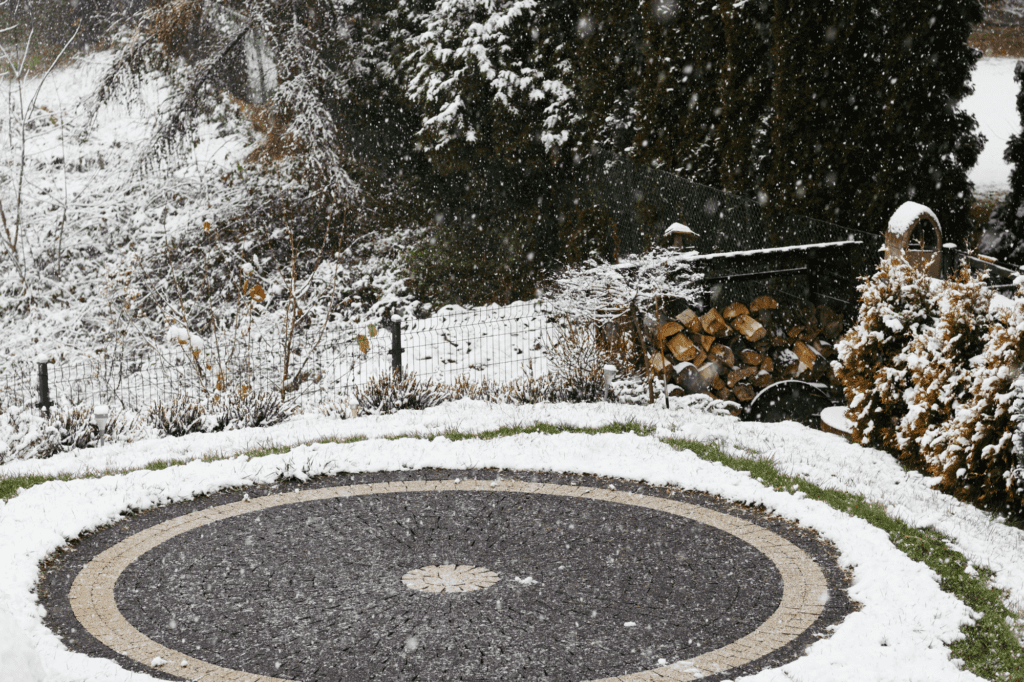Benefits of Covering Your Garden in the Winter
 When winter arrives, it’s important to take steps to protect your garden from the harsh conditions. One effective strategy for winter garden care is to cover your plants. Here are some of the most significant benefits of utilizing covers during the winter months:
When winter arrives, it’s important to take steps to protect your garden from the harsh conditions. One effective strategy for winter garden care is to cover your plants. Here are some of the most significant benefits of utilizing covers during the winter months:
- Protection from extreme temperatures: Garden covers can help to insulate your plants from extreme temperatures. This is especially crucial for delicate plants that are vulnerable to cold damage.
- Prevention of frost damage: Frost can wreak havoc on your garden, causing damage to leaves and flowers. By covering your plants, you can prevent frost from settling and causing harm.
- Shelter from wind damage: Wind can dry out plants and damage delicate structures, particularly when it’s combined with cold temperatures. Covers can help to block strong winds and prevent damage.
- Retention of soil moisture: During the winter, soil can easily dry out. Covers can help to retain moisture, ensuring your plants stay hydrated and healthy.
- Prevention of soil erosion: Winter weather can cause soil erosion, which can harm your garden and make it more challenging to maintain. Covers help to protect the soil from erosion during heavy rain and snowfall.
Types of Garden Covers for Winter Protection
 There are a variety of garden covers available for winter protection, each with their own unique benefits and uses. Here are some of the most popular options:
There are a variety of garden covers available for winter protection, each with their own unique benefits and uses. Here are some of the most popular options:
| Cover Type | Description |
|---|---|
| Frost Blankets | Also known as floating row covers, these blankets are made from lightweight fabric and are designed to protect plants from frost and cold temperatures. They can be draped directly over plants or secured with stakes or clips. |
| Row Covers | Similar to frost blankets, row covers are made from a lightweight fabric and protect plants from frost damage. They can be used to cover an entire row of plants or placed over individual plants. Row covers should be removed during the day to allow for sunlight and ventilation. |
| Cloches | Cloches are small plastic or glass covers that are placed over individual plants. They create a mini greenhouse effect, trapping heat and protecting delicate plants from frost and cold temperatures. |
| Cold Frames | Cold frames are large, box-like structures that are used to cover entire garden beds. They are typically made from wood or PVC and covered with clear plastic. Cold frames provide protection from cold temperatures, wind, and frost while also allowing for ventilation and sunlight. |
Tips for Using Garden Covers in Winter
Using garden covers in winter requires some know-how to be effective. Here are some tips to help you make the most of your winter garden covers:1. Properly Install and Secure Covers
Before installing covers, make sure your garden is free of debris that could puncture them. When installing covers, be sure to create a taut surface that will not sag under the weight of snow or ice. You should also secure covers to the ground with stakes or pins to prevent them from blowing away in strong winds.2. Provide Adequate Ventilation
While covers protect plants from the harsh winter elements, they can also trap heat and moisture, creating a greenhouse effect that can be harmful to plants. To prevent this, be sure to provide adequate ventilation by creating openings in the covers. You can do this by propping up the edges of the covers with stakes or by creating small openings in the covers themselves.3. Water and Care for Plants Under Covers
Plants under covers still need water and care during winter. Be sure to check moisture levels regularly and water as needed. You should also monitor for pests and diseases and take necessary action if you notice any problems.4. Know When to Remove Covers
While covers provide important protection in winter, they can also hinder growth if left on too long. Be sure to monitor plant growth and remove covers as soon as possible once temperatures begin to rise in spring. This will allow plants to get the light and air they need to thrive. By following these tips, you can ensure that your winter garden covers provide the protection your plants need to survive the harsh winter months.Can I Cover My Trampoline in the Winter to Protect It?
Yes, you can protect your trampoline during winter by properly storing it. The best way to do so is by disassembling and storing a trampoline during winter indoors, such as in a garage or basement. Alternatively, you can cover the trampoline with a weather-resistant tarp tightly secured to prevent damage from snow, ice, and other harsh elements.
Preparing Your Garden for Winter
Before covering your garden for winter, it’s important to prepare it properly. Here are some essential tasks to consider:- Clean up debris: Remove fallen leaves, dead plants, and any other debris from your garden. This helps prevent the growth of pests and diseases during the winter months.
- Pruning: Trim back any dead or damaged branches from your plants to prevent further damage during winter storms.
- Mulching: Add a layer of mulch around your plants to help retain moisture in the soil and protect roots from freezing temperatures.
- Winterizing irrigation systems: Drain and store garden hoses and shut off outdoor water sources to prevent freezing and damage to your irrigation system.








